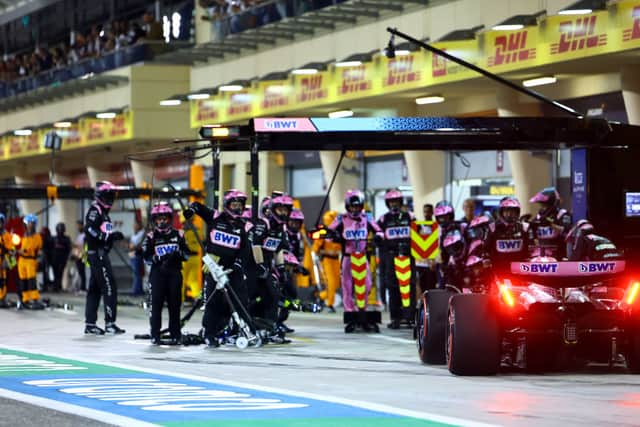Why is there a formation lap in F1? What are the rules, can drivers overtake, has anyone crashed their car
and live on Freeview channel 276
The 2023 Formula 1 season kicked off at the beginning of March with Max Verstappen starting another title-defending season with immense success as he and teammate Sergio ‘Checo’ Perez secured themselves a one-two finish.
It felt like history repeating itself for Charles Leclerc and Ferrari as they suffered engine failure and were forced to bring in one of their two cars before the final flag and McLaren also endured one of the worst starts of the season to date as rookie Oscar Piastri was unable to finish and Lando Norris ended the Bahrain Grand Prix in last place. Fernando Alonso earned his first podium since 2021 as Aston Martin enjoyed phenomenal success with the injured Lance Stroll still finishing up in sixth place.
Advertisement
Hide AdAdvertisement
Hide AdThe sport will return to our screens once again this weekend as the Saudi Arabia Grand Prix comes back around and while fans will hope the upcoming 22 races provide much more drama than the opening weekend in Sakhir, there are still some staples of a Formula 1 weekend which aren’t going anywhere.
Here is all you need to know about formation laps in Formula 1 and why they are such an important part of the race...


What is a Formation lap?
The formation lap, sometimes known as a pace lap, parade lap or warm-up lap, is the lap before the lights go out at the start of the race. Drivers go around the track at a slow speed (usually between 30 and 75mph) and, in some cases, behind the safety car. In F1, if a driver leaves the grid before the last qualifier has moved away, they will be forced to start the race from the pit lane or back of the grid.
The lap is to ensure that track conditions are safe and there are no dangerous problems with the car, including safety car, or the circuit. Overtaking has been permitted in certain motorcycle races, but it is not permitted in car racing, including F1.
Advertisement
Hide AdAdvertisement
Hide AdThe formation lap also offers an opportunity for drivers to heat their tyres and brakes so performance off the line and breaking into Turn 1 is optimal. Drivers can also practice the start itself to ensure the clutch position is in the best place possible for ‘its lights out and away we go’.
Have there been crashes in formation laps?
Despite going at a maximum of only 75mph, there have been several incidents on the formation lap which have hampered drivers’. In the 2021 Belgian Grand Prix, Red Bull’s Perez found himself spinning into the barriers during the formation laps as the wet conditions caught up with the Mexican driver. The car, and he, were however not damaged and Perez was able to start the race from the pit lanes.
His teammate, Verstappen, suffered a similar fate at the 2020 Hungaroring Grand Prix when he spun into the barrier and was in need of tyre changes ahead of lights out. The Dutchman, however, went on to finish second in the race.
Drivers such as Nigel Mansell, Ralf and Michael Schumacher, Alain Prost and David Coulthard have all suffered misfortunes while in the formation lap and in 2001 and 2003 Giancarlo Fisichella lined up in the wrong starting position on the grid following his formation lap. Last week, however, it was Alpine’s Esteban Ocon who suffered the most recent upset when he was given a time penalty as he started the race with his right tire outside the starting box following the formation lap.
Comment Guidelines
National World encourages reader discussion on our stories. User feedback, insights and back-and-forth exchanges add a rich layer of context to reporting. Please review our Community Guidelines before commenting.
